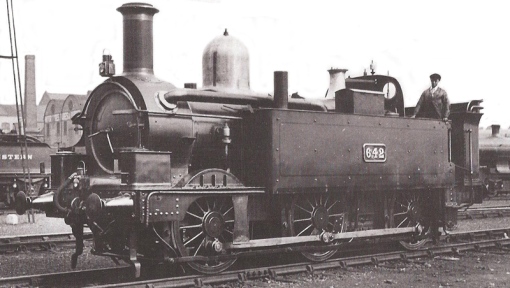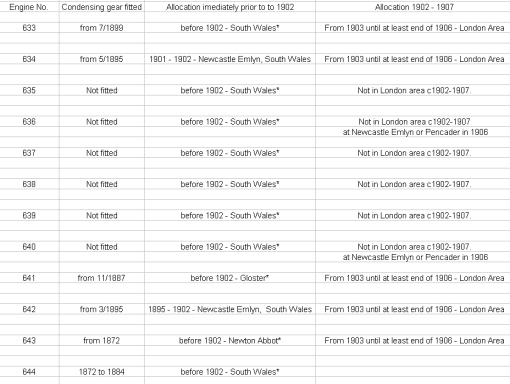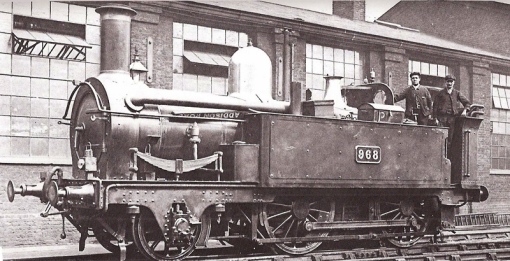The recent completion of a commissioned X2 MICA B in post-1904 livery prompted this entry which otherwise might have been written at a later date. The two photographs illustrate this model.
Located as it is between the dock and Smithfield market, meat traffic will play a significant part of goods traffic passing through the subterranean levels of Basilica Fields, with the GWR shouldering the greatest load. If, like me, you grew up unsullied by Great Western telegraph code nomenclature, and therefore completely in the dark about MORELS, MITES, MACAWS, MINKS, MOGOs and MAGOOS (one of those is a red herring, and that’s nothing to do with fish traffic!), then hopefully you’ll at least have some idea of what a MICA is by the end of this mini series. As these vehicles came in so many varieties I’ll be dealing with each type separately, so this first entry serves as a detailed overview.
Perhaps the most famous of GWR meat trains were those running between Birkenhead and Smithfield via Acton, but there were other services to Plymouth and Avonmouth, as well as one between Victoria Dock and Cardiff via the North London Railway. The Circle & Widened Lines Extension to the docks also gives an opportunity to transport meat from there to Smithfield, and occasionally direct to Acton without recourse to the NLR.
Through the 1890s, beef from the Americas landed live at Birkenhead, and after a short period of recovery from the arduous journey the cattle was slaughtered and butchered locally. Their carcasses were then chilled before forwarding to Smithfield – a process taking up to 20 hours from abattoir to market. Ventilated vans were found to be sufficient keep the meat cool for this journey, and for the purpose of Basilica Fields we need go to back no further than the 110 vans built between 1889 – 1891 which were later diagrammed X1 and given the telegraph code MICA. Ventilation was via hinged bonnet ends that ran the full width along the top of the vans with scalloped bottoms to the sides, and a series of 1ft 8ins ventilation slots along the side of the vans on the third plank down. Construction was double-cased tongue and grooved planking with flush-fitted doors and no exterior bracing. These vans were fully vacuum fitted for running at fast goods speeds.
Contemporaneously, a batch of 13 vans were built at Swansea Wagon Works for the South Wales Railway and later diagrammed X3 with the code MICA A. These were non-ventilated and were used for rushing chilled meats between Victoria Dock in London to Cardiff. They had ice containers installed and used straw for insulation. The vans were diagonally planked with a narrow cupboard door and were fitted with a vacuum through pipe for travelling at passenger speeds.
With the increase of chilled and frozen meat such as mutton from Australasia, a new van emerged based on the X1 design but without the side ventilation slots and having plain bottoms to the ventilator bonnet sides. These vans were fitted with X3-type ice containers which were filled from the inside, and a 3″ air space between the double body sheeting provided some degree of insulation. As such, these 240 vans to diagram X2 could be used either as ventilated or refrigerated, depending on the requirement, and were given the code MICA B. Ten further examples of X2 were built without the end ventilator bonnets and coded MICA A, and another ten X2 were fitted with the end bonnets but had no ice containers and were simply coded MICA.
The liveries of the MICAs throws up a few interesting questions which I’ve not had answered satisfactorily yet, and so I’ll begin with extracts from Slinn’s Great Western Way pp.97 – 102:
Period ending 1903: “It was at the time of the start of the right hand small lettering that refrigerated meat vans began to be painted with white bodies and it is believed that the lettering was black. Photographic emulsions of the time do not differentiate between black and red and no trace has been found in official documents to say which colour was used…”1904 – 1919: “Refrigerated vans had already appeared painted in white but now their lettering was executed in red.”
- Question: Right-hand small GWR lettering was introduced c1893, so what colour were the X3 vans between being built in 1889 and 1893?
I had assumed that the red lettering was introduced with the white livery from comments in other sources, such as Tourret et al.
- Question: Is there any other source to confirm black lettering was used on white-painted X2 and X3 MICA A and MICA B up to 1904, or did small red lettering in fact appear much earlier during the 1890s?
The whole debate over the colour of general merchandise goods stock in the 1890s also throws up one further interesting query.
- Question: Were X1 MICAs originally painted red?
The floor is open for debate!
For the record, the model was built from a WEP brass kit, pretty much as designed, and given a light weathering. Screw couplings and safety chains from Laurie Griffin. Contemporary photographs show these vans got absolutely filthy, no doubt in part due to their journey to Smithfield on the Metropolitan Line, so this one represents a fairly recently repainted example c1912.





